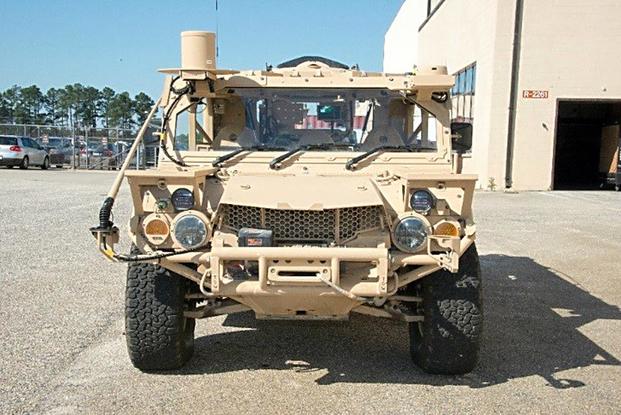Army modernization officials on Wednesday had to explain to Congress why the new, ultra-light combat vehicles the service plans to field to airborne units are so expensive.
Lt. Gen. John M. Murray and Lt. Gen. Paul Ostrowski testified before the House Armed Services Committee's tactical air and land forces subcommittee about the ground force modernization budget request for fiscal 2019.
Rep. Salud Carbajal, D-California, wanted the Army to explain why the Army is paying more than $270,000 each for its new Ground Mobility Vehicles, "which are fairly-small, unarmored, jeep-like trucks."
In mid-September 2015, Army officials at the Maneuver Conference at Fort Benning, Georgia stressed that Army light infantry units need a transportable, ultra-light combat vehicle that can they can take into a forced-entry operation.
In the proposed fiscal 2019 budget, the Army is requesting $47 million to procure 133 Ground Mobility Vehicles at unit cost of $271,000 each, which is twice the cost what a typical Humvee," Carbajal said.
The Army's fiscal 2018 budget included a request for 100 GMVs for $260,000 each, he said.
Carbajal said he was concerned that the Army is buying 300 GMVs -- enough to equip five airborne infantry brigade combat teams -- through a "sole-source contract" with a plan for a competition in the future to buy more.
"Gen. Murray, do you think the cost per vehicle of more than $270,000 each is warranted?" Carbajal said. "I ask because there appear to be several commercially-available vehicles on the market for much less. And the Army already has large numbers of unarmored Humvees that meet most of the requirements for this vehicle.
"Simply put, are we going to spend more than we should?"
Murray, the deputy chief of staff for Army G-8, disagreed with Carbajal's characterization of the Army's procurement of the GMV as a sole-source contract that was awarded without competition.
The Army is purchasing the GMV through an existing Special Operations Command contract, Murray said.
"SOCOM was buying this vehicle; it had headspace in their contract," Murray said. "This contract was competed prior to us buying off this contract."
Murray said the Army was able to take advantage of the development and an "open competition" that SOCOM had already completed on the vehicle.
"The primary consideration for this vehicle when the decision was made to go with the SOCOM contract was speed, for, as you stated, five airborne IBCTs," Murray said.
The full and open competition, which has funding in fiscal 2019 to complete, is to equip 30 IBCTs with the GMV.
"Is the $270,000 high? It's higher than some of the options on the market, but this was the fastest way to get this requirement to the field because the contract; the competition was done, the [engineering, manufacturing and development] phase was done, the down-select was done," Murray said. "A lot of the things that take up those years to get to what it is you are going to buy was done by SOCOM before we opted to buy off that contract."
Carbajal then asked if the Army had written proof to back up Murray's answer.
"Gen. Ostrowski, is there detailed records about the decision-making process that led to what was articulated by Gen. Murray?" Cabajal asked.
Ostrowski confirmed that the Army had documented the process to include how it had modified that SOCOM contract to reduce the cost of the vehicle.
"We didn't need all the components that SOCOM had on that vehicle, all the bells and whistles, because again what we needed was the capability to move in the period darkness from a drop zone to a landing strip at a speed that was faster than the boot, and so hence the five airborne brigades to start with," Ostrowski said.
"The key thing here, sir, is that the competitive piece to this is going to be where industry is going to have the opportunity to really get after," Ostrowski added. "Right now, we are going to have vehicles in the field in 2018 going off the SOCOM contract. Otherwise, we would not have had vehicles in the field until 2020."
-- Matthew Cox can be reached at matthew.cox@military.com.










